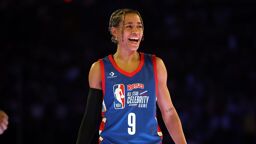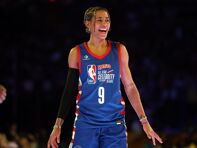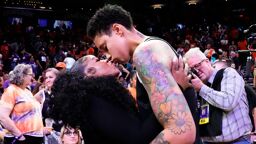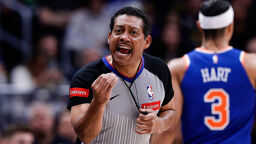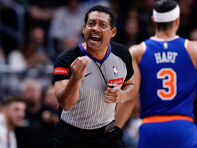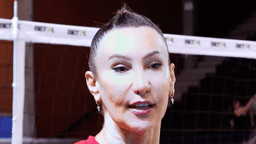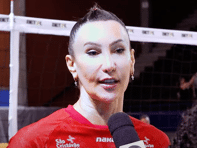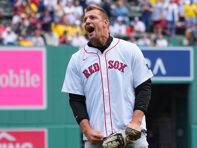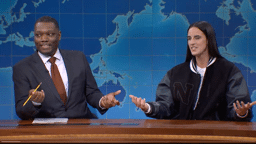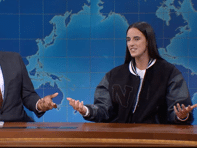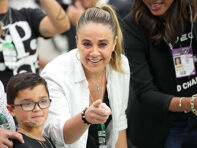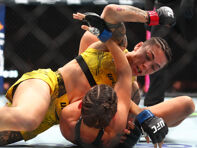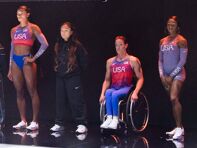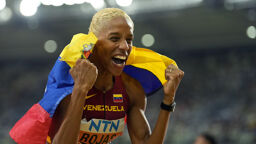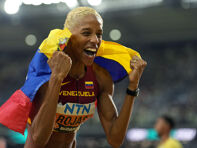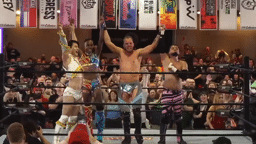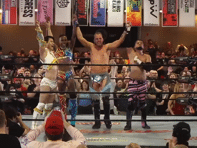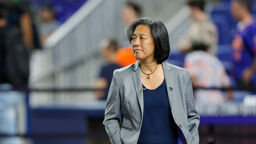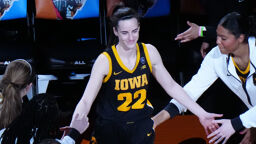(This story was published in 2005).
Read an excerpt from “The Rivals”
In her terrific new book “The Rivals,” Johnette Howard explores the rivalry and relationship of Chris Evert and Martina Navratilova, the two athletes who dominated women’s tennis in the 1970s and ’80s. Different in surface respects, Howard shows how the two were alike in the traits that mattered and how their friendship endures to this day.
Howard, a columnist for Newsday, has written a rollicking, entertaining and insightful account of what she calls “the greatest and longest-running individual rivalry in sports history—a captivating 80-match set piece that unfolded over 16 years [and] included 60 finals.”
The public perception was simple: Evert, everyone’s All-American Princess, reserved, prim and proper, vs. Navratilova, the hard-bodied Czech refugee with the alternative lifestyle and less-than-traditional feminine manner.
“Evert and Navratilova were a study in contrasts, a collision of styles and politics and looks. Fans felt so attached to each player many declared themselves either ‘Chrissie fans’ or ‘Martina fans,’ ” Howard writes, “as if that was some defining choice, something akin to identifying oneself as a Democrat or a Republican, a liberal or a conservative, a Hatfield or a McCoy.”
While there is truth in all stereotypes, “The Rivals” shows that the two women shared a love of competition, an inner toughness and will to win and an overwhelming desire to be the best. Evert was nurtured by her demanding yet loving father (and showed a wilder side to her friends that belied her image). Navratilova saw some success early but became dominant in the 1980s only after falling in love with Nancy Lieberman, the basketball star who developed (in Evert’s derisive term) a “kill Chris” strategy. (Navratilova also is a softie with a “heart that dents like a pillow.”)
I am not much of a tennis fan and can’t remember the last time I watched a complete match, men’s or women’s. But this did not stop me from thoroughly enjoying “The Rivals,” a tribute to Howard’s skills as a writer and chronicler.
The book is populated with wonderful anecdotes that stay with the reader. We hear of Billie Jean King crying in the shower before a big match against Evert at the 1971 U.S. Open (“I just felt that if I lost to Chris, everything we tried to build [in women’s pro tennis] was going to do down the drain.”) We hear how proud a wide-eyed Navratilova was at winning a fur coat at a 1974 tournament, wearing it despite a tour director’s description of it as “dog fur—God it was ugly.” Evert’s romantic relationships with those like players like Jimmy Connors and John Lloyd are explored in details, as are Navratilova’s with the likes of Lieberman, Judy Nelson and Rita Mae Brown (“Rita Mae shot me!” Navratilova exclaims after one knock-down, drag-out fight that involved a gun).
More than just a book about Evert and Navratilova, “The Rivals” is a solid history of the rise of the women’s sports movement. The heroine here is King, who fought incredible sexism to forge a women’s tour. “These tennis girls would be much happier if they settled down, got married and had a family,” was a typical sentiment expressed at the time by players like Stan Smith. King, rather than be threatened by the meteoric success of Evert as were other players, correctly saw the teenager as the perfect star for the new era—athletic yet feminine enough to appeal to the masses.
Navratilova arrived on the scene when Evert was already established. Her journey from communist Czechoslovakia to capitalist America is recounted, including her dramatic bid for asylum. Along with her new-found freedom came the confidence to be open about her sexuality, something that took guts back then (and still does now). Navratilova was an out lesbian, yet was able to utterly dominate tennis in the 1980s and win over her critics in the process. And supportive of her all the way was Evert, who in discussing King’s lesbianism wrote in 1981, “Who are we to knock it if someone is gay? … We’re in no position to judge right and wrong in someone else’s life.”
A fascinating character in the story is Lieberman, who comes across as (there’s no other way to say it) a total, controlling bitch. She wound up being the most important cog in “Team Navratilova,” the assortment of trainers, nutritionists and therapists who helped mold Martina into the best player in the world, using methods ahead of their time. But Lieberman’s abrasive tactics and ability to alienate most everyone, while perhaps necessary, had their price. “What bothered me,” Evert said, “was Nancy made it personal, not just about tennis. She thought that Martina would play better if she hated me.”
Howard is sympathetic to Lieberman in many ways, saying she has “an extraordinary grasp of what makes a great athlete great. Her astute take on who Navratilova was and what it would take form her to challenge Evert seems even more remarkable in hindsight, given the heights Navratilova would reach.”
Howard is effective detailing the personal stories about the players and their era, but also in breaking down the fine points of tennis that will appeal to both aficionados and novices. For example, her description of why the top players almost always win in tennis is the most convincing I’ve read.
The best sports segment occurs during the retelling of the 1985 French Open final between the two players (I won’t spoil the ending for those who don’t know who won). The three-hour epic distilled everything that was wonderful about their rivalry. “When it was through,” Howard writes, “Navratilova came around to Evert’s side of the net to sling an arm around her. And Evert held on to Navratilova’s hand just an instant longer when their arm-in-arm walk off the court ended at the umpire’s chair, then turned away so Navratilova couldn’t see her shoving away a few tears.”
My only quibble with the book is its lack of discussion about the players’ respective endorsements. Navratilova has always maintained her being out cost her dearly in sponsorships, despite her being ranked No. 1 from 1982-86. I would have loved a comparison of what Evert received at her heights vs. that of Navratilova. This would show in a telling way the financial price Navratilova paid for being herself.
The legacy of Chrissie and Martina as athletes and people is forever secure and “The Rivals” serves as a compelling testimony to their achievements and the era they profoundly shaped. Howard has served up an ace.



